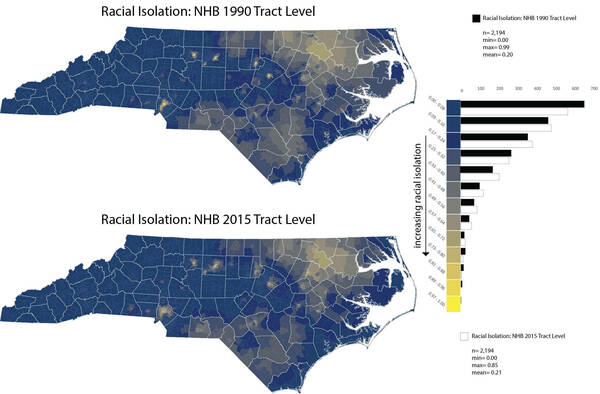
Research published in the journal Pediatrics has found that blood lead levels are higher in children living in racially segregated neighborhoods ─ underscoring the negative health effects of policies stemming from systemic racism.
The study is the latest from the University of Notre Dame’s Children’s Environmental Health Initiative (CEHI), which examines the adverse and disproportionate environmental burdens experienced by communities in racially segregated areas.
The study showed that from 1990 to 2015 blood lead levels in children declined substantially — but levels in non-Hispanic Black children living in racially segregated neighborhoods remain higher than in children living outside those communities.
“In the United States, one of the clearest examples of the link between racial residential segregation and environmental exposures is childhood lead exposure – which has been shown to be disproportionately burdensome to members of the Black community,” said Marie Lynn Miranda, director of CEHI and adjunct professor in the Department of Applied and Computational Mathematics and Statistics at Notre Dame. “We found that in 1990 there was a strong relationship between communities that were very segregated and children who had more elevated blood lead levels,” Miranda said. “When we look at the data for 2015 we see, unfortunately, that relationship has persisted.”
The Centers for Disease Control and Prevention has stated there is no amount of lead in the body that is considered safe – and that children are especially sensitive to lead exposure, which can cause damage to the brain and nervous system and result in learning, behavior, hearing and speech problems. Today, the primary source of exposure is contact with deteriorating lead-based paints which were used in homes built prior to 1978, when lead in paint was banned. As the paint ages, it starts to “chalk,” creating dust that can be inhaled or ingested. Children may also ingest lead-containing paint chips, which, unfortunately, taste sweet.
Lead pipes and fixtures can create exposure through drinking water, and lead has been found in certain candies, spices and herbal remedies.
For the study, CEHI analyzed spatial measures of neighborhood-level racial residential segregation – the geographic separation of one racial/ethnic group from others – along with blood lead levels recorded over a 25-year-period in more than 320,000 children under the age of seven across all 100 counties in North Carolina.
“Childhood lead exposure is a classic environmental justice problem," Miranda said. “Children of color, in particular, non-Hispanic Black children, are exposed to more lead- and racially segregated communities not only have higher levels of lead exposure, but must contend with other adverse social and environmental exposures going on at the same time.”
Blood lead testing data was made available by the Childhood Lead Poisoning Prevention Program of the North Carolina Department of Health and Human Services in Raleigh. Miranda said partnering with state and local health departments and community organizations is critical for using what we learn from scientific research to improve children’s lives.
“If we can leverage the enormous amount of data that’s out there about where children live, what they’re exposed to, and how that exposure shapes their outcomes, we can determine what kinds of interventions are most needed and most likely to be successful.”
The racial residential segregation measure, which CEHI developed, represents a weighted average proportion of the non-Hispanic Black population at the neighborhood level. By using a local, spatial measure of racial residential segregation rather than race itself, CEHI hopes to shift the conversation from using race, which is non-modifiable, as an explanatory variable – to using the experience of racial minorities as a root cause of health disparities.
The data is free and available to the public at cehidatahub.org.
Contact: Jessica Sieff
Associate Director, Media Relations
jsieff@nd.edu
Originally published by at research.nd.edu on August 30, 2023.